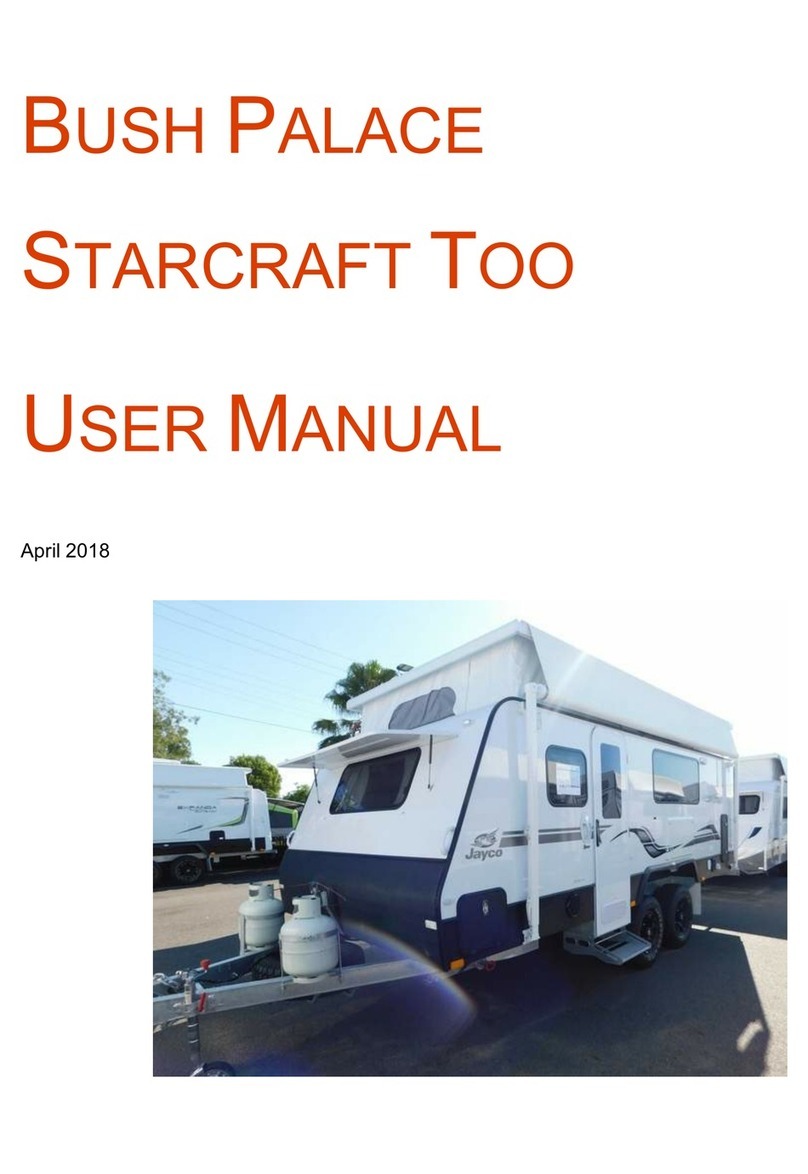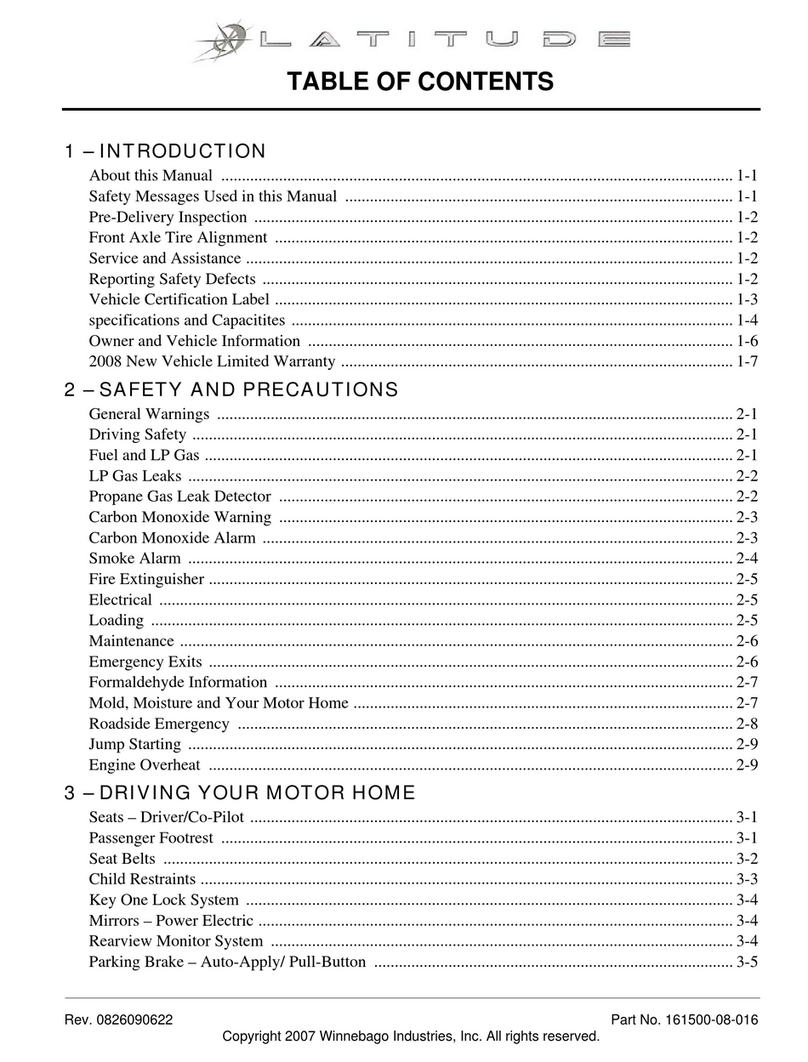SECTION 2 INTRODUCTION
2-1
2 - INTRODUCTION
IMPORTANT: Before driving your vehicle, be
sure you have read the entire operator’s manual
and that you understand your vehicle’s equip-
ment completely and how to use the equipment
safely.
NOTE: The descriptions, illustrations, and
specifications in this manual were
correct at the time of printing. We
reserve the right to change specifications
or design without notice, and without
incurring obligation to install the same
on products previously manufactured.
Congratulations! We welcome you to the ex-
citing world of motor home travel and camping.
You will find it convenient and enjoyable to have
all the comforts of home and still enjoy the great
outdoors wherever you choose to go.
Your motor home has been carefully de-
signed, engineered and manufactured to provide
dependability as well as safety. Before sliding
into the driver’s seat, please become familiar
with operations and features. This manual was
prepared to aid you in the proper care and opera-
tion of the vehicle and equipment. We urge you
to read it completely. In addition, spend some
time with the dealer when you take delivery; you
will want to learn all you can about your new
motor home.
Read and understand all instructions and pre-
cautions in this manual before operating your
new motor home.
ABOUT THIS MANUAL
This manual describes many features of your
motor home and includes instructions for its safe
use. This manual, including photographs and
illustrations, is of a general nature only. Some
equipment and features described or shown in
this manual may be optional. Because of Win-
nebago Industries’ continuous program of prod-
uct improvement, it is possible that recent
product changes and information may not be
included. The instructions included in this man-
ual are intended as a guide, and in no way extend
the responsibilities of Winnebago Industries
beyond the standard written warranty as pre-
sented in this manual.
Please read this operator’s manual complete-
ly to understand how everything in your coach
works before taking it on its “maiden voyage.”
This manual is a guide to safe operation of the
features, equipment and controls in this coach.
Some equipment, such as the vehicle chassis and
certain electronic systems or appliances, have
their own comprehensive, manufacturer supplied
manuals or information sheets which describe the
operation of these products in great detail. This
manual will refer you to the manufacturer’s in-
formation included in your Owner InfoCase
whenever necessary.
We also urge you to read the complete
Chassis Operating Guide provided by the
chassis maker and all other operating infor-
mation provided by our equipment suppliers
and manufacturers. This is contained in your
Owner Infocase.
This manual should be kept in the vehicle at
all times for personal reference. The operator’s
manual, InfoCase and chassis operating guide are
to be considered permanent components of this
vehicle. They should remain in the vehicle when
sold to provide the next owner with important
safety, operating and maintenance information.
SAFETY MESSAGES USED IN THIS
MANUAL
Throughout this manual, certain items are
labeled Note, Caution, Warning or Danger.
These terms alert you to precautions that may
involve damage to your vehicle or a risk to your
personal safety. Read and follow them carefully.
DANGER indicates a directly hazard-
ous situation which, if not avoided,
will result in death or serious personal
injury.
DANGER






























